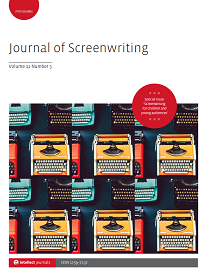
Full text loading...

This article discusses a short screenplay written for publication first, rather than production, and how this approach enabled the writer to explore fringe or non-commercial topics, specifically male gender non-conformity and queer identity formation. Shifting the focus of screenwriting from the sole goal of production to a twin goal of publication first and then production opened up a number of creative and scholarly avenues for the writer and means that the script will find an audience (a readership) irrespective of production. It also means that the textual qualities of the script are foregrounded. The script and this article explore the notion of effeminacy as a non-normative gender of considerable discursive potency that simultaneously disrupts both masculinity and femininity. The screenplay and this article also explore the relationship between memory and identity, arguing that interventions into memory contribute to the shaping of queer identity. The screenplay foregrounds dialogue as a textual strategy to enhance the readability of the screenplay and position it firmly as a textual or literary artefact.

Article metrics loading...

Full text loading...
References


Publication Date:
https://doi.org/10.1386/josc_00104_1 Published content will be available immediately after check-out or when it is released in case of a pre-order. Please make sure to be logged in to see all available purchase options.